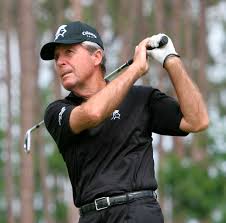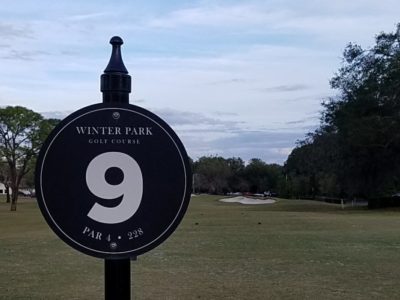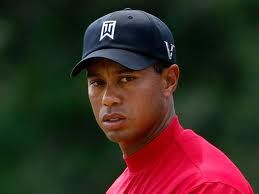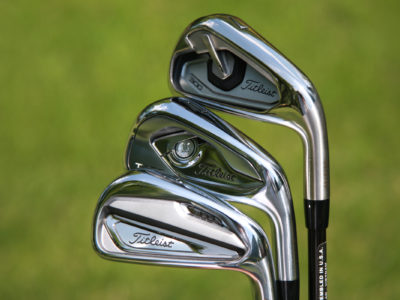By Ed Travis
“Whilst delighted for all the players, it’s quite sad to see The Old Course of St Andrews brought to her knees by today’s ball & equipment.”
This was a quote on Twitter from nine-time major champion, Gary Player referring to the low scores recorded at the Alfred Dunhill Links Championship last month.
Player was an intense competitor, is intelligent, perceptive and holds tremendous stature in the game, but unfortunately the opinion expressed in this tweet ignores the reality of golf today.
Ross Fisher established a new course record of 61 on the Old Course at St. Andrews, during the Alfred Dunhill Links Championship. Gary Player’s quote seems to lay blame for Fisher’s record, as well as, other low scores posted during the Dunhill, to modern technological advances in the golf ball and equipment.
He is not only mistaken, but for everyone who plays, dangerously wrong.
Player failed to mention that the weather was nearly perfect for this time of year on Scotland’s east coast and even more important, there was little or no wind.
The Old Course has immense landing areas and the greens lay wide open in the front which leaves the wind as its primary defense. Without wind the course is particularly vulnerable to skilled players. Another factor in this case was that the course set up was not as severe. The Alfred Dunhill Links is a pro-am and amateurs are playing with the pros each day. The organizers did not want the course so difficult the amateurs could not finish in a timely fashion.
With no wind and accessible pin locations low scoring is not a surprise.
At a tournament length of over 7,300 yards, St. Andrews is not a pushover and though scores during the Dunhill were not what we usually see during the Open Championship, it is undeniable that over the years the course has withstood every generation’s best players. Not perhaps, without some lengthening, or reworking some putting surfaces and bunkers, but always with what my friends in Chicago call “the hawk,” the wind, being the major factor.
Player’s tweet promotes the oft expressed opinion that modern clubs and balls are a problem but in truth since the gutta percha ball replaced the featherie 150 years ago, someone is always opining the exact same thing, after every advance in equipment technology.
Herein lies the danger.
With Player and others beating the drum, the USGA and The R&A will take it on themselves to “fix the problem.” Following the logic of “drivers are too hot,” or, “the ball goes too far,” could mean further restrictions on equipment or even creation of separate equipment standards for elite-players.
Either would be detrimental to the game in general.
Both ignore how virtually all elite players follow an intense physical conditioning regimen, a rarity until Tiger Woods hit the professional circuit, but exactly what Player himself has preached since the 1960s. Additionally those saying today’s equipment is a problem, overlook the extensive use of sophisticated computer data to fix a swing, which is used by every elite player. Nor, are the tremendous advances in agronomy accounted for, which allow fairways to remain much firmer.
It is not just technology and the equipment’s fault.
It is overly simplistic to focus solely on the springiness of clubfaces or improvements to the golf ball. Modern golf balls go farther, but does that really hurt the game, or is it merely a desire to maintain the status quo. A solution, which will unduly penalize all but a few.
Do you, or any of your friends, think you are hitting the ball too far? Do you know anyone, who has given up the game because it’s too easy?
Making rules to rein in distance, because it is thought a few hundred professionals and maybe a like number of the best amateurs are hitting greater distances is ignoring the reality of modern golf. It also ignores the laws of physics as pointed out by Frank Thomas (inventor of the graphite shaft and former Technical Director of the USGA), that the increase in distance, due to the solid core ball and high rebound driver faces has reached its maximum.
If indeed there is a problem, and I’m not conceding there is, the Tour could solve it by simply setting up courses to be more penal though fans would immediately hate it.
The fact the Tour does not do this is an acknowledgement for the status quo. Fans enjoy seeing pros struggle occasionally, when faced with narrow fairways, landing zone hazards and thick four-inch rough as at a U.S. Open. But, that’s only once each year.
Chicks (and Golf Fans) Dig the Long Ball!
If penal setups were the case every week it wouldn’t take the tour pros long to decide to leave the driver in the bag. Fans would lose the excitement of seeing D.J, Justin, Jason or Bubba challenging the course with booming drives.
How much excitement is there in one plain vanilla par-4 after another calling for a three-iron tee shot followed by a wedge? Not much! What other entertainment business would ever propose to intentionally alienate fans?
World-class instructor, Hank Haney put it best, when he said,
“Fans don’t go to a baseball game hoping to see some good bunt singles.”
If the pros were forced to play with restrictive equipment, it would kill any marketing plan that relies on “Tour validation.” Acushnet, Bridgestone, Callaway, Cobra, Ping, PXG, Taylormade, Wilson and others spend millions on advertising based on the premise golfers want to play with the same equipment as the pros.
You may argue, but you can’t deny restricting the ball or clubs used by elite players would drastically change the economics of the club business.
As I have written before the so-called distance problem isn’t a real problem, it’s only a conclusion drawn based on an opinion or maybe even an unacknowledged yearning for the “good old days.”
The idea modern equipment hurts the “integrity” of the game is fatuous and certainly dangerous. It’s a triple threat with the potential to push golfers out of the game, alienate fans, plus jeopardize the ability of manufactures to be rewarded for advances in equipment design.










